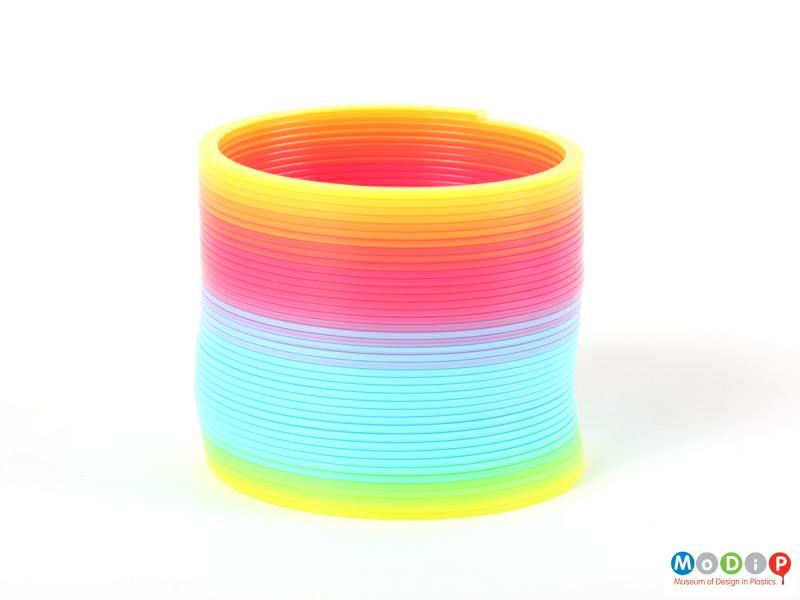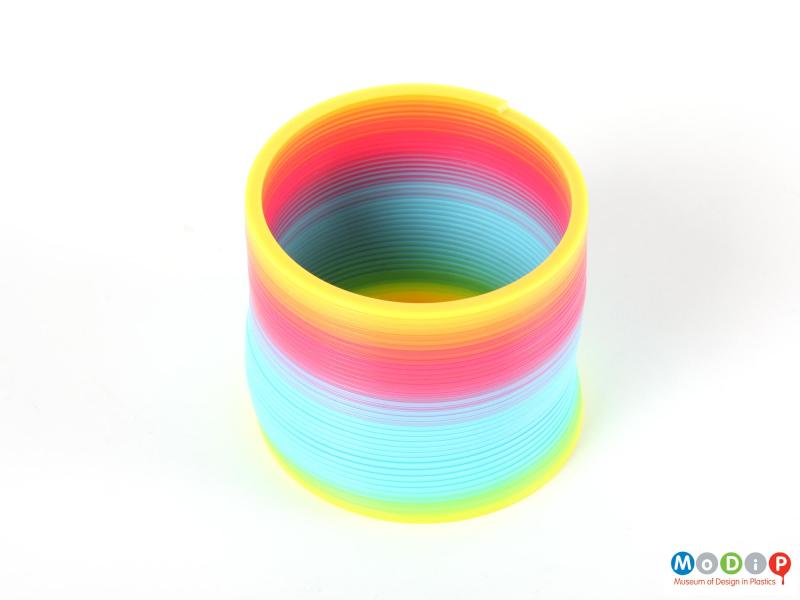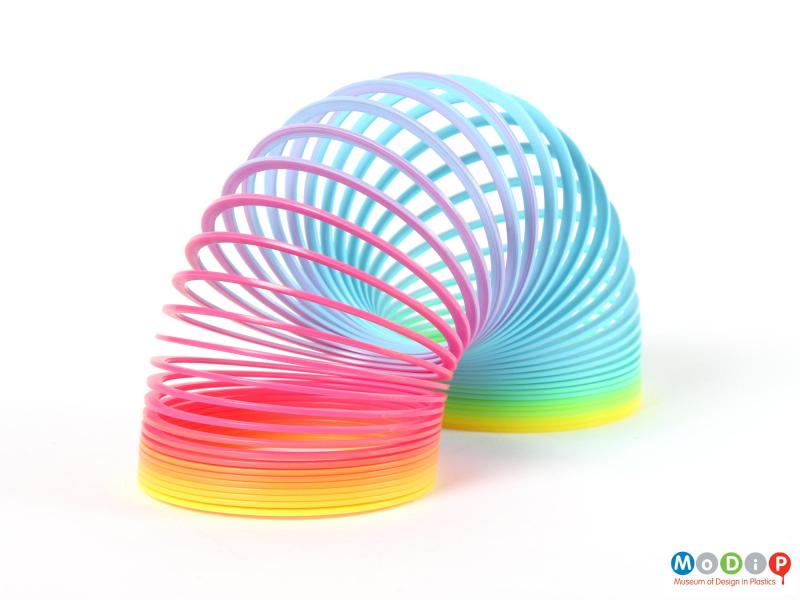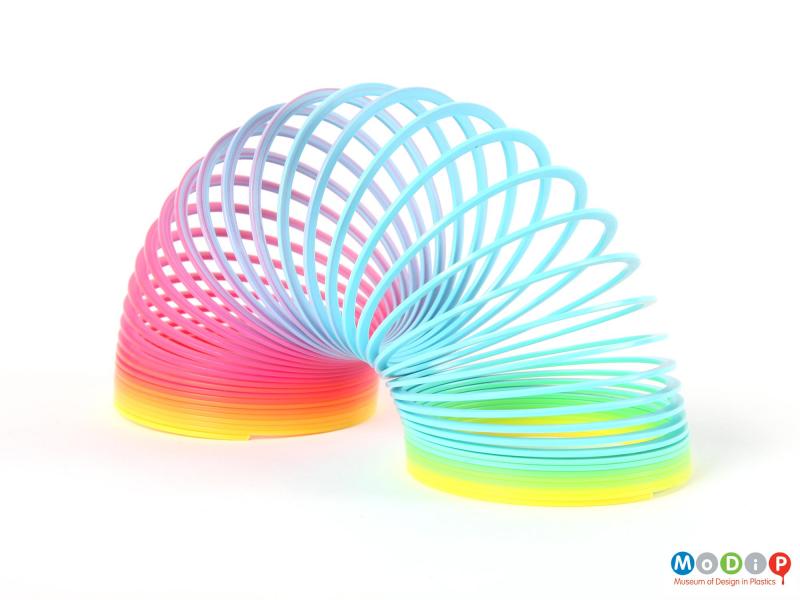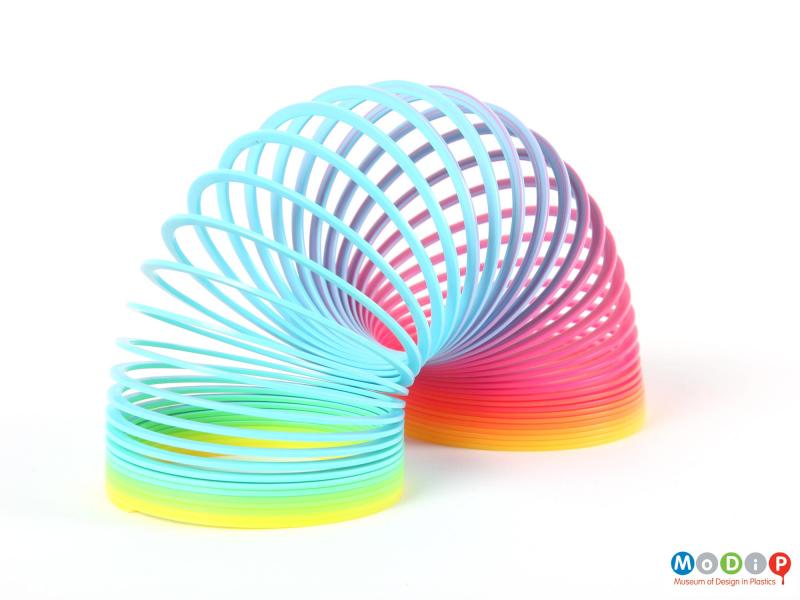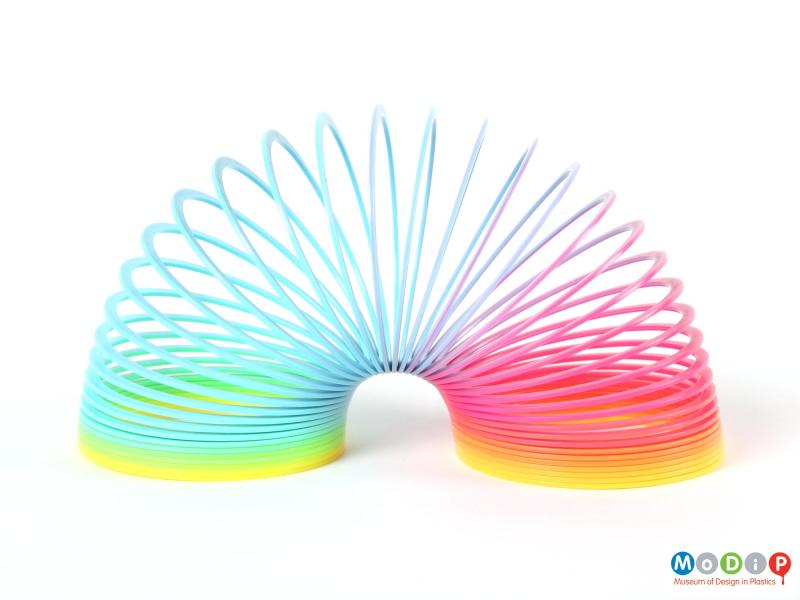Classification
Description
A rainbow coloured, extruded plastic slinky toy. The metal slinky was invented by American naval engineer Richard James in 1943, whilst developing springs to stabilise instrumentation on board ships in rough seas. He observed a spring falling from a shelf and watched it complete a series of arcs down to the floor. He refined the idea and created the slinky toy with James Industries selling 100 million units in the first two years of production. This plastics version was invented by Donald James Reum, Sr. of Avon Plastics in Albany, Minnesota who retains the patent along with a further 25 patents for other plastics extruded items. This was another accidental discovery that was observed whilst trying to create a spiral hose for watering plants. As the extruded plastic came off the assembly line, Reum's children began to play with the cast-offs like a slinky toy. He developed a prototype and went on to make the plastic slinky for James Industries for several years until Betty James decided to manufacture the product exclusively, commiting patent infringement. The plastics toy proved popular as it was easier for small children to handle and would not get tangled up and damaged like the metal version (plastics slinkys are more flexible and less deformable, allowing them to be more easily reversed end-to-end without tangling). They were marketed in the 1970s as a safer alternative to metal slinkys as they did not present a hazard when inserted into electrical sockets. Reum's patent (no. 4120929) was filed on 28.12.1976 and issued on 17.10.1978.
Designers & Manufacturers
Designer (Person)
Manufacturer
Object number
AIBDC : 006000
Date
1978 - 2010 (circa)

